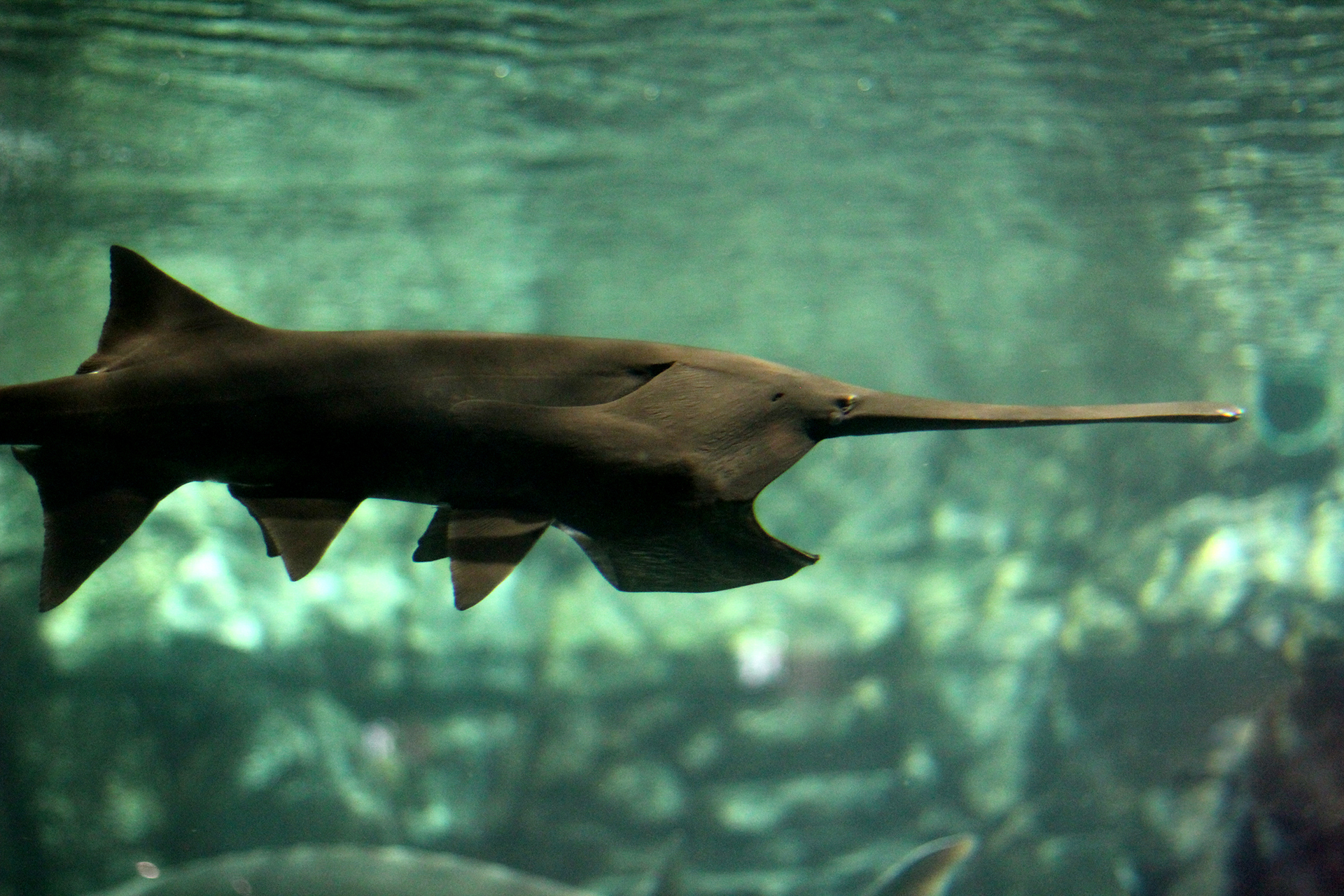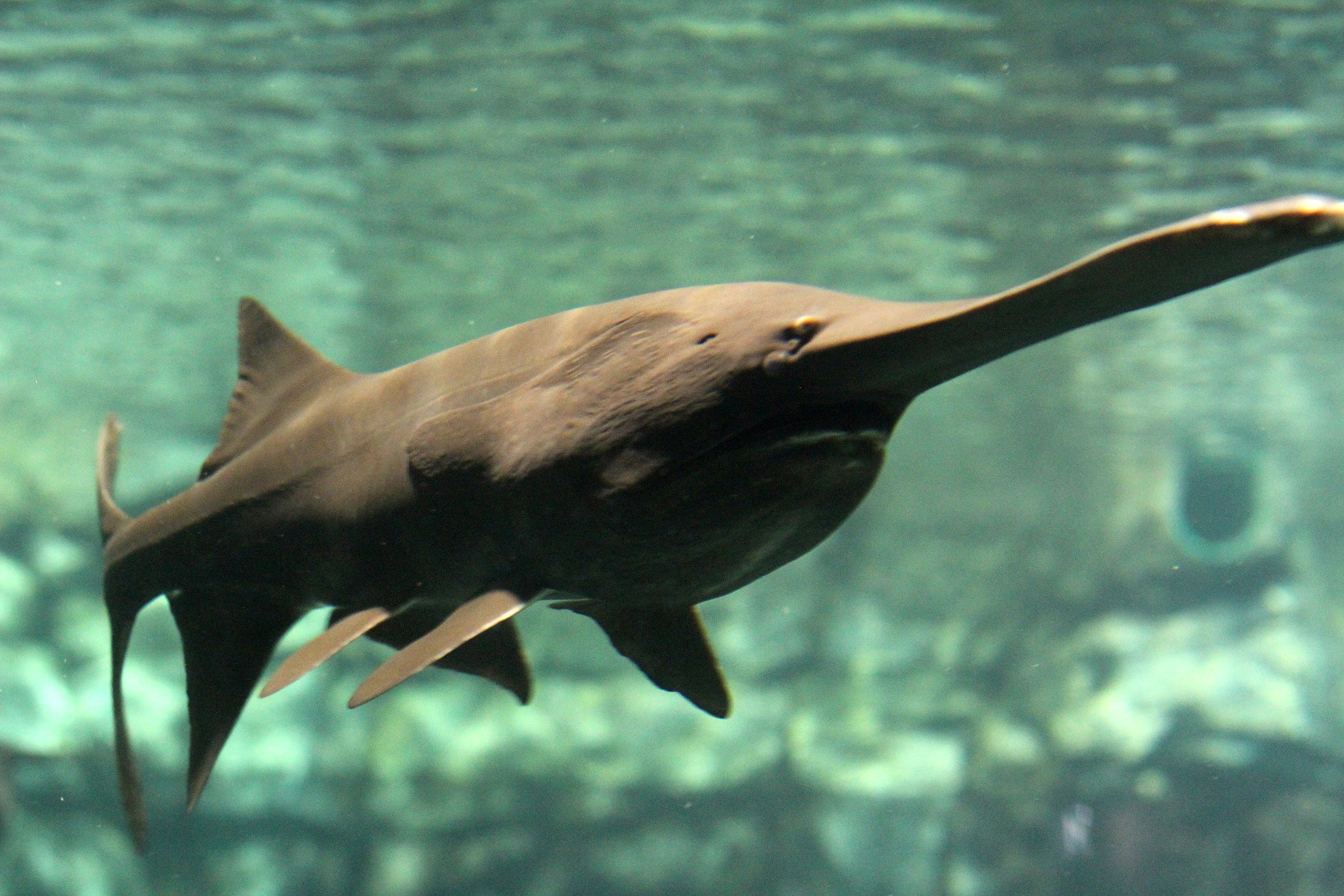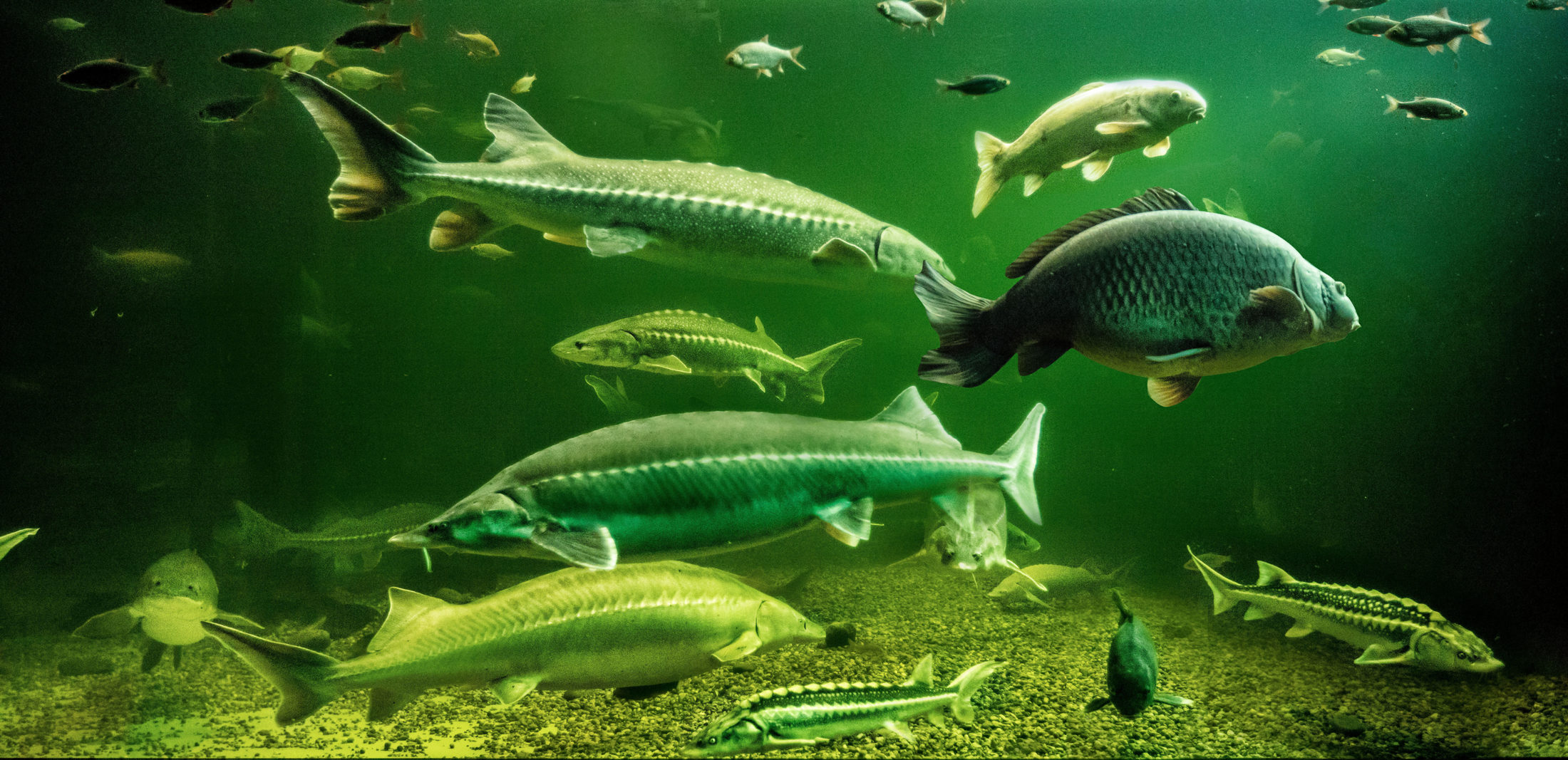Who lives where? Who lives how? What story do these fish have? We are happy to answer these and other questions in our species presentation.
Description
The most striking feature of the paddlefish is its body structure and paddle or spoon shaped snout. It is a highly sensitive organ that has numerous electroreceptors, allowing it to sense electrical fields and changes in water temperature. Its snout is surprisingly long, accounting for nearly 1 third of its total length. Its colors vary from lighter shades of gray-green to darker shades of gray and black. This gives it an advantage when tracking prey. In our aquarium you will find a species that has no teeth and is almost completely unscaled. When feeding, the paddlefish turns its large jaws downward - this allows its gills to act like fish traps, filtering food out of the water as it swims and providing deep insights into the fish's inner workings, an interesting sight for onlookers.
Source: www.fischlexikon.eu
Way of Life/Habitat
Because the paddlefish eats primarily zooplankton, it is found in waters large enough to support an adequate plankton assemblage. It is often found in the Mississippi River system.
Fact sheet
Scientific Name:
Polyodon spathula
Size:
max. 220 cm
Weight:
90 kg
Age:
max. 55 years
Habitat:
Mississippi River System, slow flowing water




